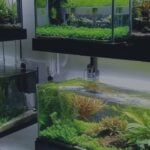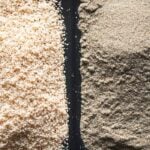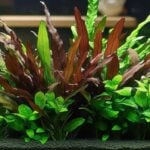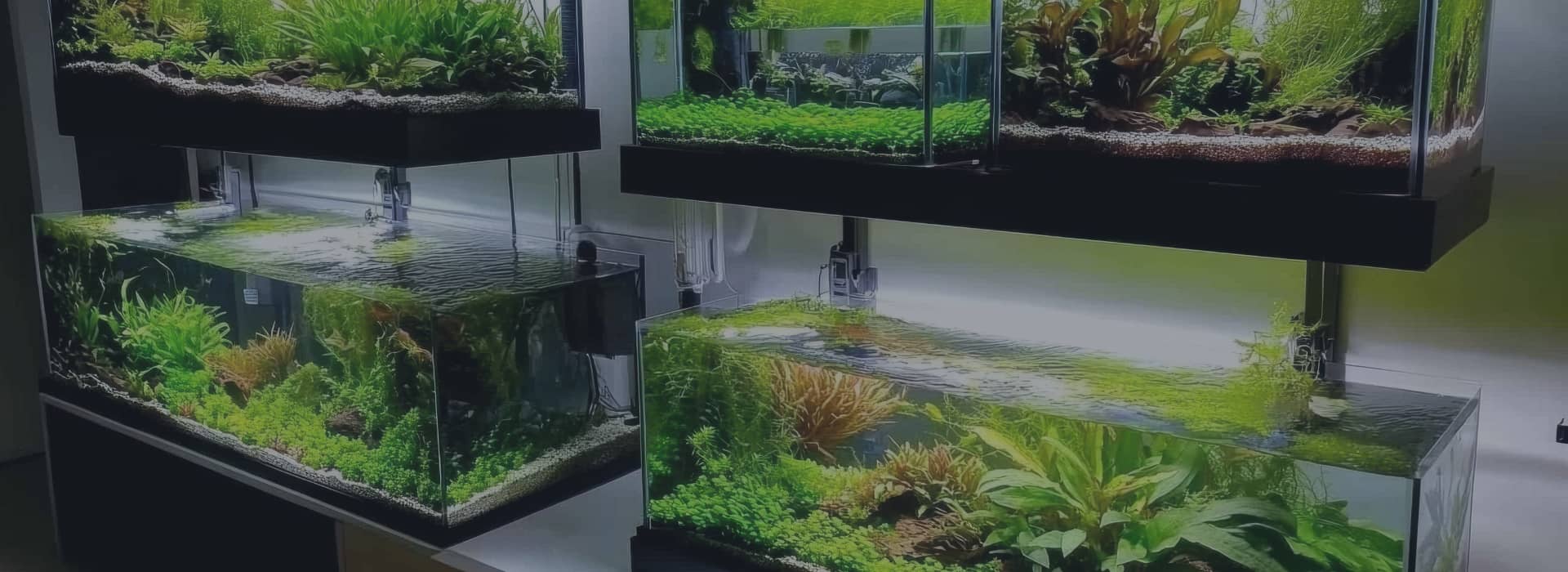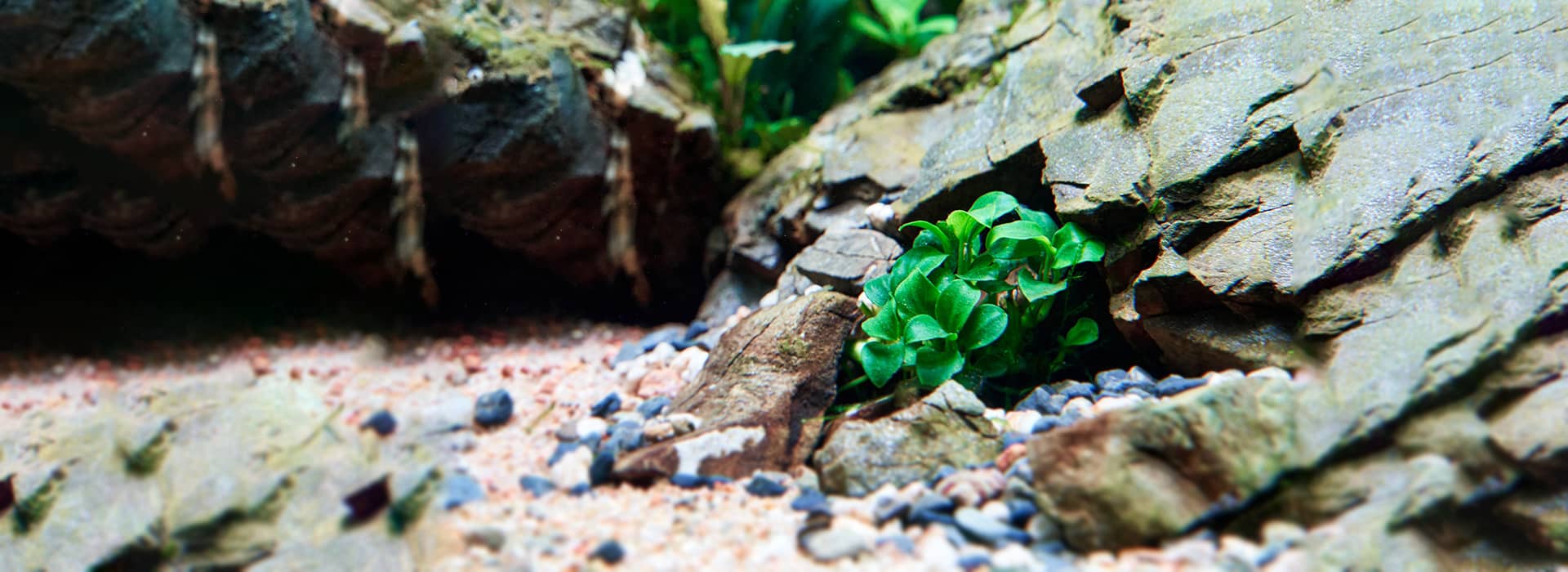A healthy aquarium is a working and functioning ecosystem. Maintaining it that way requires a few key equipment and one of the most important is the filtration system. Aquarium filters are an important piece of equipment in any tank because they help to maintain water quality and keep the water clean. They do this by removing excess waste and toxins from the water, which can build up over time and harm the plants and animals living in the tank.
In addition to helping to maintain water quality, filters also help to oxygenate the water and create water movement, which can be beneficial for the plants and animals living in the tank.
Overall, an aquarium filter is an essential piece of equipment for any aquarium.
There are several things to consider when choosing the right aquarium filter for your tank. These include:
- Tank size
- Type of filter
- Filtration rate
- Maintenance
- Cost
- Durability
Before we take a closer look at each of these closely, it is important to understand the various stages of aquarium filtration which include
- Mechanical filtration: This stage involves straining particles and debris from the water using a physical barrier, such as a piece of foam or a filter pad. They are good at removing solid waste from the water.
- Biological filters: This is the most important and often the most overlooked stage of aquarium filtration. This stage uses beneficial bacteria to convert harmful ammonia and nitrite into less toxic nitrate. They are an essential part of the nitrogen cycle and are important for maintaining water quality in an aquarium. A properly cycled tank needs a filtration system that can house a healthy colony of these beneficial bacteria.
- Chemical filtration: This stage involves the use of materials such as activated carbon to remove impurities and toxins from the water. They are effective at removing dissolved organic waste, medication residue, and other dissolved contaminants. If you want crystal clear water then chemical filtration will help you achieve that.
Mechanical and biological filtration are absolutely necessary without which the aquarium’s ecosystem won’t survive. Low tech tanks won’t need chemical filtration but good filters feature all three stages.
Let us now take a look at all the criteria based on which it can be determined if a filter is good or not for your aquarium
Tank size
It is important to choose a filter that is appropriate for the size of your tank. A filter that is too small will not be able to properly clean your tank, while a filter that is too large may create too much current and disturb your tank’s inhabitants. It can also increase the running cost of the tank.
In general, you should aim for a filter that can turn over the entire volume of your tank at least once per hour.
To calculate the size of the filter you need for your tank, you can use the following formula:
Tank size (in gallons) x turnover rate (in gallons per hour) = flow rate (in gallons per hour)
For example, if you have a 50-gallon tank and you want a turnover rate of at least 10 times per hour, you would need a filter with a flow rate of 500 gallons per hour.
Type of filter
There are several types of aquarium filters available, each with its own unique set of features and benefits. Some common types of filters include:
- Canister filters: These filters are designed to be hidden inside a cabinet or under the tank, and they use a combination of mechanical, biological, and chemical filtration to clean the water. They are often more powerful and efficient than other types of filters, but they can be more expensive to buy and maintain.
Pros
- Can be neatly stowed away out of sight
- Easier to maintain
- Powerful and efficient
Cons
- Expensive to install and maintain
- Too powerful for small tanks
- Hang-on-back (HOB) filters: These filters are designed to hang on the back of the tank and use a combination of mechanical and biological filtration to clean the water. They are easy to install and maintain, making them a popular choice for beginner aquarists.
Pros
- Easy to install and maintain
- Relatively inexpensive
- Great for nano planted tanks that require a gentle water current
Cons
- Not powerful enough for large tanks
- Top or Box filters: These filters consist of a powerhead that sits under the water surface which pumps water into a box that sits on top of the tank. This box contains all the various stages of filtration. The filtered water then falls back into the tank thanks to gravity.
Pros
- Easy to install and maintain
- Provide good oxygenation
- Lot of flexibility when it comes to the filter media you can use
Cons
- Will block a portion of the light
- The aquarium will need a tall lid or no lid which isn’t ideal if you have fish that are prone to jumping
- Internal hanging filters: These filters are designed to be installed inside the tank and use a combination of mechanical and biological filtration to clean the water. They are compact and easy to hide, but they may not be as powerful as other types of filters.
Pros
- Compact
- Inexpensive
Cons
- Not very powerful or efficient
- Will release debris and detritus back into the aquarium if it isn’t cleaned regularly
- Maintenance is messy
- Provides low levels of oxygenation
- The suction cups used to fix them to the aquarium wall will harden over time causing the filter to become unattached
- Sponge filters: A sponge filter is a type of mechanical filter that is often used in aquariums. It consists of a porous sponge that is attached to an airlift tube, which pumps water through the sponge and back into the tank. As the water passes through the sponge, it is filtered through the pores, which remove solid waste and debris from the water. It is perfect for breeding and hospital tanks.
Pros
- Compact
- Very affordable
- Great for breeding, nursery, and hospital tanks
Cons
- Not very powerful or efficient
- Maintenance is messy
- Undergravel filters: An undergravel filter is a type of mechanical filter that is placed under the substrate (gravel or sand) in an aquarium. It consists of a series of tubes or plates that are placed in the substrate and covered with a layer of gravel or sand. Water is drawn through the substrate and into the tubes or plates, where it is filtered through the gravel or sand before being returned to the tank.
Pros
- Provides a great place for beneficial bacteria to settle
- Inexpensive
Cons
- Can lead to detritus build-up and dead spots
- Very difficult to maintain as all the substrate has to be removed first
- All the tubing needed can make it look ugly
- Has to be used in conjunction with a different type of filter that can provide mechanical filtration
I must mention the central refugium filtration system as well. I have multiple aquariums and it is more efficient to hook up all the tanks that require the same water conditions to a single refugium tank. It is basically like the top filter where water from all the tanks are pumped into the refugium where it is filtered and pumped back into the aquariums.
This method is great as it makes maintenance a lot easier, is very power efficient and provides a high flow rate. The only catch is that I have to be very careful when adding new fish. If an infected or diseased fish is introduced into one tank, it can spread its ailment to all the tanks connected to the refugium. I have been able to avoid this so far by carefully quarantining new additions which I would do anyway for all new fish irrespective of whether they are meant for tanks with a dedicated filter or connected to the refugium.
Filtration rate
The filtration rate refers to the amount of water that the filter can process in a given amount of time. It’s important to choose a filter with a high filtration rate to ensure that your tank is properly cleaned.
The aforementioned flow-rate of the filter is best metric for this. For most tanks this formula is valid
Tank size (in gallons) x 10 = flow rate (in gallons per hour)
However, there are cases when this flow rate isn’t enough. If your aquarium houses messy eaters or fish that produce a lot of waste such as goldfish or Oscars, you will need a filter with a higher flow rate. In such cases, use the following formula to determine the ideal flow rate for the filtration system
Tank size (in gallons) x 15 = flow rate (in gallons per hour)
Maintenance
Some filters require more maintenance than others. Consider the time and effort you are willing to put into maintaining your filter when choosing one.
Here are a few tips for selecting a filter that is easy to maintain:
Check the manufacturer’s instructions: The manufacturer’s instructions should provide information on how to clean and maintain the filter, as well as any special care instructions. Look for a filter that has straightforward, easy-to-follow instructions.
Consider the frequency of maintenance: Some filters require more frequent cleaning or media replacement than others. If you don’t have a lot of time to dedicate to maintenance, look for a filter that requires less frequent attention.
Consider the maintenance tools required: Some filters may require specialized tools or equipment for cleaning or maintenance. If you don’t want to invest in additional tools, look for a filter that can be easily maintained with basic equipment.
Read reviews from other users: Reading reviews from other users can be a good way to get an idea of the ease of maintenance of a filter. Look for reviews that mention the filter’s maintenance requirements and any issues or problems that users have experienced.
By selecting a filter that is easy to clean and maintain, you can save time and effort in the long run and keep your tank running smoothly. The trick is to find the filter that is the easiest to maintain while providing adequate filtration within your budget.
Cost
Cost is another very important factor to consider when shopping for aquarium filters. Here are a few tips for selecting a filter that is within your budget:
- Determine your budget:
Before you start shopping, it’s a good idea to have a rough estimate of how much you are willing to spend on a filter. This will help you narrow down your options and focus on filters that are within your price range. Take the cost of filter media and any tools you might need to maint6and service the filter into account. Remember, the most expensive filter isn’t always the best filter for your needs
- Consider the size of your tank:
Larger filters are generally more expensive than smaller filters, so the size of your tank can have a big impact on the cost of your filter. If you have a larger tank, you may need to budget more for your filter. - Research different brands and models:
There are a wide range of aquarium filters available, and the price can vary significantly between brands and models. Do your research and compare prices to find the best deal. - Consider the long-term costs:
In addition to the initial purchase price, it’s important to consider the long-term costs of owning an aquarium filter. This includes the cost of replacement media, maintenance, longevity, and any repairs that may be needed. - Look for sales and discounts:
Keep an eye out for sales or discounts on aquarium filters, as this can be a good way to save money. You may also be able to find used filters at a discounted price. Just check then in person to make sure that they are in working condition
By doing your research and being mindful of your budget, you should be able to find a filter that meets your needs and fits within your price range.
Durability
Durability and build quality are often overlooked but a filter that is prone to failure can be catastrophic for the aquarium. Here are a few tips for selecting a durable filter:
- Check the manufacturer’s warranty:
A good manufacturer’s warranty can be an indication of the overall quality and durability of a filter. Look for a filter that has a long warranty period, as this can give you added peace of mind and protection in case something goes wrong. - Read reviews from other users:
Reading reviews from other users can be a good way to get an idea of the durability of a filter. Look for reviews that mention the filter’s overall quality, as well as any issues or problems that users have experienced. - Consider the materials used in the construction:
Filters that are made with high-quality materials are generally more durable than those made with lower-quality materials. Look for filters that are made with heavy-duty plastic or metal, as these materials are generally more durable than other options. - Consider the maintenance requirements:
Filters that require frequent cleaning or media replacement may not be as durable as those that are low maintenance. Look for a filter that is easy to clean and maintain, as this can help to extend its lifespan.
By taking the time to find a high-quality, durable filter, you can help ensure that your filter will last for a long time and provide reliable performance which is crucial to the inhabitants of the aquarium.
Five Great Aquarium Filters
There are many different aquarium filters available, and the best one for you will depend on the size of your tank, the type of fish and plants you keep, and your personal preferences. Here are a few popular options that are widely regarded as some of the best aquarium filters on the market
- Fluval FX6:
This powerful canister filter is suitable for tanks up to 400 gallons and has a flow rate of up to 925 gallons per hour. It has a large filter media capacity and a self-priming feature that makes it easy to start and maintain. - Eheim 2217:
A smaller canister filter that is suitable for tanks up to 93 gallons and has a flow rate of up to 264 gallons per hour. It has a robust design and is known for its quiet operation and low maintenance requirements. - Penn Plax Cascade:
This hang-on-back (HOB) filter is suitable for tanks up to 65 gallons and has a flow rate of up to 265 gallons per hour. It has a multi-stage filtration system and is easy to install and maintain. - Fluval C4:
This hang-on-back (HOB) filter is suitable for tanks up to 40 gallons and has a flow rate of up to 145 gallons per hour. It has a multi-stage filtration system and a self-priming feature that makes it easy to start and maintain. - AquaClear 20:
This internal filter is suitable for tanks up to 20 gallons and has a flow rate of up to 110 gallons per hour. It has a multi-stage filtration system and is easy to install and maintain.
Overall, these are all high-quality filters that are suitable for a variety of aquarium sizes and setups. They are known for their reliability, efficiency, and ease of use, and they have received positive reviews from many satisfied users.
FAQs
Which filter is best for aquarium?
That depends on the size of your tank, your budget, and the inhabitants of the tank. Use my tips to choose the perfect filter for your aquarium
How often should you change your filter in fish tank?
Waiting for a filter to fail before replacing it may not be prudent. The powerhead or pump is the only part that can suffer catastrophic failure. Replace it once the warranty expires. As for the other components, replace them once they start developing cracks or show high wear and tear
What is the best filter for a planted aquarium?
Any filter with a gentle flow rate that provides good oxygenation and can be hidden easily is best for a planted aquarium
Are external aquarium filters better than internal?
External aquariums tend to be more efficient, powerful, and easier to maintain but they also cost more
What are the different types of filters?
Canister, hang on the back (HOB), Box, internal hanging, undergravel, sponge, refugium
Why Do Aquariums Need Filters?
They clean the debris and suspended particles while also getting rid of chemicals that are harmful to the fish. A filter is crucial to maintaining a healthy ecosystem
What is the most effective aquarium filter?
A canister filter
What are the 3 main types of filters for aquariums?
Mechanical, biological, and chemical
How do I know if my tank filter is too strong?
If the fish seem to be constantly fighting the water current, or the plants get uprooted, or the substrate gets blown around, then the filter is too strong
What is the best filter for tropical fish?
Depends on the fish. Any filter that is durable, cost effective, and powerful enough for the amount of waste the fish produce will do
What kind of filters to use with aquascaping?
A hang on the back filter is the best option
What is the best filter for a 75 gallon aquarium?
Internal filter or small canister filter
What is the best filter for a 29 gallon aquarium?
Internal filter, sponge filter, HOB filter
Which canister filter is the best for aquarium?
Fluval makes some of best and highly rated canister filters on the market
What is the best aquarium filter system?
Canister filter
What is the best aquarium filter for goldfish?
Any filter with a high flow rate
Which is best filter for aquarium hang or external?
Both have their pros and cons
Does an Aquascape tank need a filter?
It most certainly does
Should you use carbon filter in planted aquarium?
They can make the water look cleaner but they will lower the pH
Best aquarium filter for large tanks
A robust canister filter is the best option for large tanks
Conclusion
A lot of different elements have to come together to create a healthy aquarium that stays that way in the long run. The filtration system can either make or break this ecosystem. It can also play a big role in how much pleasure you derive from the hobby.
To get the best results, choose an aquarium that is well within your budget but provides all the necessary stages of filtration and an adequate flow rate. It should also be easy to setup and maintain. Getting the right filter will remove most of the headaches associated with this hobby and everything I have mentioned so far should get you there without any major hassles.
